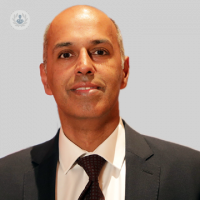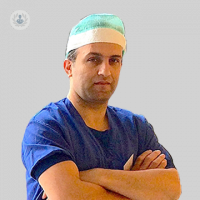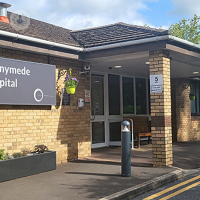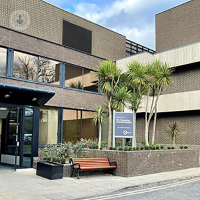What are swollen legs?
Swollen legs, or leg swelling, can happen in any part of the legs. This includes the feet, thighs, ankles and calves. It can occur either due to fluid retention or from inflammation in injured or diseased tissue or joints.

Are swollen legs a sign of a serious problem?
There are many possible causes of swollen legs, and in the case of a wound or fracture, the swelling is likely to resolve on its own. However, you should seek urgent medical help if you experience:
- difficulty breathing
- chest pain
- dizziness or fainting
If you’ve injured your leg, you should visit your doctor if:
You should also seek help if you experience swelling in one leg without an injury, as this may be a sign of deep vein thrombosis.
What causes swollen legs?
Swollen legs caused by the build-up of fluid is called oedema, and has a number of possible causes:
- kidney disease
- heart failure
- deep vein thrombosis (DVT)
- liver disease
- pregnancy
- malnutrition
- medications including steroids, blood pressure medications, antidepressants, and painkillers
- hormone therapy
- venous insufficiency
- standing or sitting for a long time
Swelling in the legs can also occur as a result of inflammation. A wide range of leg injuries can cause inflammation, including:
- ACL injury
- Leg wound
- Sprained ankle
- Broken leg or broken foot
- Achilles tendon rupture
Finally, inflammation can also occur as a result of long-term conditions including osteoarthritis, rheumatoid arthritis, bursitis and gout.
How are swollen legs diagnosed and treated?
Your doctor will ask how long you have had swelling in your legs, what the pain is like, and if you have any other symptoms. You will also be asked about what medication you take and any existing long-term conditions you have.
If you have had an injury, you might be referred for an X-ray or CT scan to examine the bones and tissues in your legs.
How can swollen legs be prevented?
You can reduce your risk of injuries by taking care to warm up properly before exercise, and by seeing a physiotherapist to ensure your form and movement is correct.
To reduce the risk of fluid pooling in your legs, it’s important to:
- avoid standing or sitting for long periods of time - if you are on a long-distance flight you should make sure you get up regularly to maintain good circulation in your legs, or wear compression stockings
- lose weight if you’re overweight to reduce the risk of kidney or heart disease
Swollen legs
What are swollen legs?
Swollen legs, or leg swelling, can happen in any part of the legs. This includes the feet, thighs, ankles and calves. It can occur either due to fluid retention or from inflammation in injured or diseased tissue or joints.

Are swollen legs a sign of a serious problem?
There are many possible causes of swollen legs, and in the case of a wound or fracture, the swelling is likely to resolve on its own. However, you should seek urgent medical help if you experience:
- difficulty breathing
- chest pain
- dizziness or fainting
If you’ve injured your leg, you should visit your doctor if:
You should also seek help if you experience swelling in one leg without an injury, as this may be a sign of deep vein thrombosis.
What causes swollen legs?
Swollen legs caused by the build-up of fluid is called oedema, and has a number of possible causes:
- kidney disease
- heart failure
- deep vein thrombosis (DVT)
- liver disease
- pregnancy
- malnutrition
- medications including steroids, blood pressure medications, antidepressants, and painkillers
- hormone therapy
- venous insufficiency
- standing or sitting for a long time
Swelling in the legs can also occur as a result of inflammation. A wide range of leg injuries can cause inflammation, including:
- ACL injury
- Leg wound
- Sprained ankle
- Broken leg or broken foot
- Achilles tendon rupture
Finally, inflammation can also occur as a result of long-term conditions including osteoarthritis, rheumatoid arthritis, bursitis and gout.
How are swollen legs diagnosed and treated?
Your doctor will ask how long you have had swelling in your legs, what the pain is like, and if you have any other symptoms. You will also be asked about what medication you take and any existing long-term conditions you have.
If you have had an injury, you might be referred for an X-ray or CT scan to examine the bones and tissues in your legs.
How can swollen legs be prevented?
You can reduce your risk of injuries by taking care to warm up properly before exercise, and by seeing a physiotherapist to ensure your form and movement is correct.
To reduce the risk of fluid pooling in your legs, it’s important to:
- avoid standing or sitting for long periods of time - if you are on a long-distance flight you should make sure you get up regularly to maintain good circulation in your legs, or wear compression stockings
- lose weight if you’re overweight to reduce the risk of kidney or heart disease
Experts in Swollen legs
-
Mr David Greenstein
Vascular surgeryExpert in:
- Varicose veins
- Spider veins (thread veins)
- Pelvic congestion syndrome
- Deep vein thrombosis (DVT)
- Hand veins
- Swollen legs
-
Mr Manj Gohel
Vascular surgeryExpert in:
- Varicose veins surgery
- Deep vein thrombosis (DVT)
- Leg ulcers
- Swollen legs
- Post-thrombotic syndrome
- Varicose veins
-
Mr Akin Oluwole
Vascular surgeryExpert in:
- Varicose veins
- Leg ulcers
- Aortic aneurysms
- Carotid artery disease
- Peripheral arterial disease
- Swollen legs
-
Professor Vassilis Hadjianastassiou
Vascular surgeryExpert in:
- Varicose veins
- Swollen legs
- Endovenous laser treatment (EVLA)
- Deep vein thrombosis (DVT)
- Carotid artery disease
- Aortic aneurysms
-
Mr Abdullah Jibawi
Vascular surgeryExpert in:
- Varicose veins
- Spider veins (thread veins)
- Leg ulcers
- Swollen legs
- Diabetic foot
- Vascular and Endovascular Surgery
- See all

The Runnymede Hospital - part of Circle Health Group
The Runnymede Hospital - part of Circle Health Group
Guildford Street, Ottershaw, Lyne, Chertsey KT16 0RQ
No existe teléfono en el centro.
By using the telephone number provided by TOP DOCTORS, you automatically agree to let us use your phone number for statistical and commercial purposes. For further information, read our Privacy Policy
Top Doctors

The Clementine Churchill Hospital - part of Circle Health Group
The Clementine Churchill Hospital - part of Circle Health Group
Sudbury Hill, Harrow HA1 3RX
No existe teléfono en el centro.
By using the telephone number provided by TOP DOCTORS, you automatically agree to let us use your phone number for statistical and commercial purposes. For further information, read our Privacy Policy
Top Doctors

The Park Hospital - part of Circle Health Group
The Park Hospital - part of Circle Health Group
Sherwood Lodge Drive, Burntstump Country Park, Arnold, Nottinghamshire NG5 8RX
No existe teléfono en el centro.
By using the telephone number provided by TOP DOCTORS, you automatically agree to let us use your phone number for statistical and commercial purposes. For further information, read our Privacy Policy
Top Doctors
-
The Runnymede Hospital - part of Circle Health Group
Guildford Street, Ottershaw, Lyne, Chertsey KT16 0RQ, ChertseyExpert in:
- Cardiology
- Hand surgery
- General Surgery
- Maxillofacial Surgery
- Oral surgery
- Orthopaedic surgery
-
The Clementine Churchill Hospital - part of Circle Health Group
Sudbury Hill, Harrow HA1 3RX, West LondonExpert in:
- Abdominal ultrasound
- Abdominoplasty
- Acne
- Allergies bronchopulmonary
- Allergies nose and ears
- Allergy Dermatitis
-
The Park Hospital - part of Circle Health Group
Sherwood Lodge Drive, Burntstump Country Park, Arnold, Nottinghamshire NG5 8RX, ArnoldExpert in:
- General Surgery
- Maxillofacial Surgery
- Oral surgery
- Plastic surgery, reconstructive and aesthetics
- Obstetrics and Gynaecology
- Podiatry
- See all
- Most viewed diseases, medical tests, and treatments
- Weight loss injections
- Nipple discharge
- Abdominal pain
- Endovenous laser treatment (EVLA)
- Minimal access surgery (keyhole surgery)
- Head and neck cancer
- Neck lump
- Bariatric surgery
- Acellular dermal matrix (ADM)
- Prepectoral breast reconstruction







